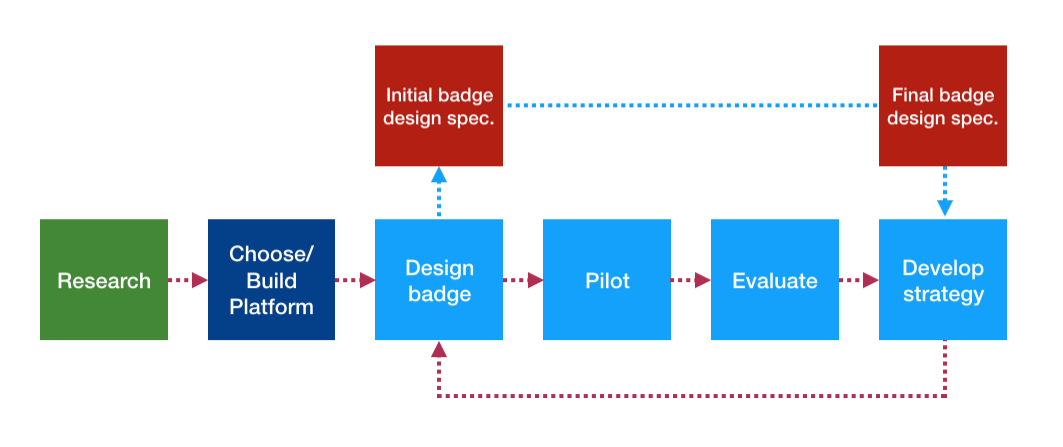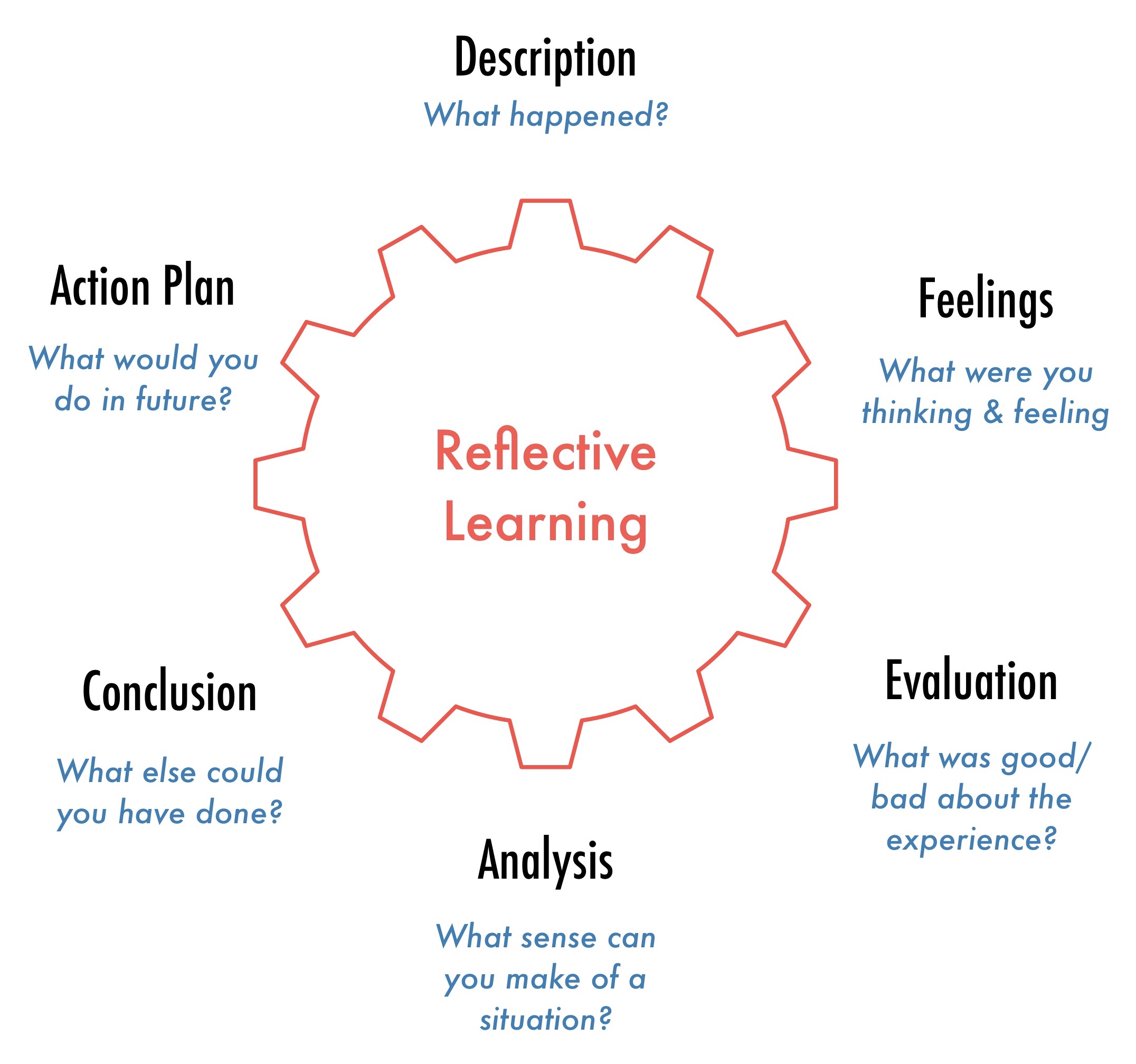Module 5 - Section 3
Micro-Credentials
Microcredentials have been defined as “competencies, skills, and learning outcomes [that are] derived from assessment-based, non-degree activities and align to specific, timely needs in the workforce”
In recent years, alternative credentialing has become an
increasingly important method of recognising learning and
achievement that takes place in a wide variety of environments.
Alternative credentials have been defined as “competencies, skills,
and learning outcomes [that are] derived from assessment-based,
non-degree activities and align to specific, timely needs in the
workforce” (Fong, Janzow, & Peck, 2016, p. 1). Essentially,
micro-credentials are bite-sized chunks of education, whether an
online course, bootcamp certificate or apprenticeship from a
traditional university or specialty provider. This rise in the
popularity of alternative credentials is due, at least in part, to
changes in the cost, availability, and perceived value of both
formal (e.g., universities, colleges) and informal (e.g., MOOCs,
YouTube, Khan Academy) learning opportunities; economic changes
(e.g., rising tuition, dropping enrolment in institutions of higher
education); and demographic shifts across the world. Many
individuals already use micro-credentials to broaden their
skillsets.
Still, some have suggested that in the future, a prospective
employee might be able to accumulate and use these credentials
together in place of a university degree. The idea is that it would
be more accessible and provide a more affordable – perhaps more
targeted – path into employment. Some micro-credentials, such as
coding bootcamps, might have been developed to fill the gaps that
universities can’t, and in turn might be perceived in relevant
sectors as good alternatives to traditional degrees. But according
to
research that Sean Gallagher (founder and executive director of
Northeastern University’s Center for the Future of Higher
Education and Talent Strategy) and his colleagues conducted in
2018, that doesn’t mean university degrees don’t have significant
value. “Data shows that college and university degrees are still
valued and demanded in the job market. They continue to give their
earners economic returns,” says Gallagher. When he surveyed 750
human resource leaders in US companies across various industries,
Gallagher found that more organisations were moving towards
skills-based hiring. But many of the applicants were degree-holders
who had obtained micro-credentials to supplement their core
qualification, rather than accumulating certificates and bootcamps
as an alternative.
Even when you look at coding bootcamps, Gallagher says, “it’s more
of a post-baccalaureate phenomenon, a little bit like a master’s
degree, but a shorter version”. Gallagher envisions an ecosystem
where micro-credentials stand in for degrees in certain areas, but
act as a supplement to degrees in others. It’s still very early
days, he stresses. For employers to buy into micro-credentials as an
alternative, there needs to be data that proves employees with
micro-credentials can perform better, or at least just as well, as
those with university degrees. The Open University provides a
concise summary of
how microcredentials can be used
and the European Union also published a paper outlining the
EU approach to microcrendentials.
One form of alternative credentialing that is rapidly gaining traction are open badges. Many corporations, government agencies, institutions of higher education and others are beginning to adopt open badges as a viable means to recognise learning, accomplishment, and achievement (Devedžić & Jovanović, 2015). An open badge is a digital micro-credential that adheres to the open badge infrastructure (OBI) developed by the Mozilla Foundation and currently administered by IMS Global. OBI calls for badges to be formatted as images enriched with metadata (e.g., issuing organisation, badge description, badge requirements, submitted evidence, standards, endorsements) that allow people to
- digitally verify that the badge was earned by a particular recipient and
- gain deep insight into the actual skills the badge earner possesses.
Open badges are envisioned as
- remixable (i.e., they can be mixed, matched, and republished to different audiences for distinct purposes)
- controlled by the badge earner, rather than by an institution, in terms of how it is shared, collected, and displayed
- portable across media and thus widely shareable to anyone selected by the earner
- issuable by any party, to any party, within any learning context (Mozilla Open Badges, 2014a)
They also tend to be competency-based and to require evidence of completion in order to be earned (Jovanović & Devedžić, 2014). While open badges are primarily a method for recognising learning, they have been used for a wide variety of other purposes as well, including as (a) a mechanism for increasing learner motivation, (b) a means of charting learning routes or pathways, and (c) a strategy for supporting self-reflection, planning, and learner agency (Jovanović & Devedžić, 2014).
What Are Open Badges And Why Use Them?
Open Badges are a straightforward way to collect, manage and share
evidence of learning in today’s digital world. You can collect them
to evidence your learning and share them in places that matter to
you, including offline as printable certificates. When you show your
badge to someone, they will be able to see criteria against which
the badge was issued and any evidence you provided to prove you met
that criteria.
The Scottish Social Services Council (SSSC) and dozens of other
social service organisations issue Open Badges to recognise
continuous and informal learning that would otherwise go unrecorded.
Their Open Badges are awarded when learners submit evidence of the application of their learning to practice as they complete or work through our digital learning resources. This not only gives them qualitative data on learners’ progress through their learning resources, but also gives them evidence of the impact of these learning resources on practice, and therefore quality of service.
The next couple of sections provide some more information about why we think learners and providers should get involved in using Open Badges.
One form of alternative credentialing that is rapidly gaining traction are open badges. Many corporations, government agencies, institutions of higher education and others are beginning to adopt open badges as a viable means to recognise learning, accomplishment, and achievement (Devedžić & Jovanović, 2015). An open badge is a digital micro-credential that adheres to the open badge infrastructure (OBI) developed by the Mozilla Foundation and currently administered by IMS Global. OBI calls for badges to be formatted as images enriched with metadata (e.g., issuing organisation, badge description, badge requirements, submitted evidence, standards, endorsements) that allow people to
- digitally verify that the badge was earned by a particular recipient and
Open badges are envisioned as
- remixable (i.e., they can be mixed, matched, and republished to different audiences for distinct purposes)
- controlled by the badge earner, rather than by an institution, in terms of how it is shared, collected, and displayed
- portable across media and thus widely shareable to anyone selected by the earner
- issuable by any party, to any party, within any learning context (Mozilla Open Badges, 2014a)
They also tend to be competency-based and to require evidence of completion in order to be earned (Jovanović & Devedžić, 2014). While open badges are primarily a method for recognising learning, they have been used for a wide variety of other purposes as well, including as (a) a mechanism for increasing learner motivation, (b) a means of charting learning routes or pathways, and (c) a strategy for supporting self-reflection, planning, and learner agency (Jovanović & Devedžić, 2014).
Why Use Open Badges?
There are benefits for everyone involved in the learning process for using Open Badges as a way of recognising learner achievement.
Benefits for learners:
- recognition for otherwise unrecognised learning
- collect evidence of learning ‘as you go’
- demonstrates commitment to continuous learning
- sharable
- backs up claims made on their CV, application form or at a job interview.
Benefits for badge issuers:
- provide evidence about impact of your learning materials and events
- they encourage learners to apply their learning to practice
- badges support retention of learning
- they encourage people to create positive learning habits
- they encourage positive cultures within organisations
- badges are free marketing for you; when a learner shares one, your brand/organisation is promoted.
Benefits for current and future employers:
- badges provide more detail about an individual’s skills, attributes, interests and values
- they give evidence of what people can do in practice
- you can usually see the evidence submitted by the learner
- you can be more certain that a badge belongs to the learner than you would a paper certificate or PDF – the badge is unique to their email address
- in future, you’ll be able to find someone by searching for a combination of badges; badges will change the way talent is discovered.
Making The Most Of Badges In Your Learning Designs
Using Open Badges for each section, chapter or module, in your
learning resource can have significant benefits for you as the
learning provider, and for your learners.
As well as being able to identify how learners are applying their
learning from your materials to their practice, by badging each
piece of content you create, you will be able to track learners’
progress through your learning materials via their applications for
the badges you’ve assigned.
This information can help you,
- Find out how people are using your resource: do they start at the beginning and work through each piece of learning in a linear fashion, or do they start where they feel it is most appropriate to them and select each ‘learning experience' in an order which suits them?
- Identify which content is more popular than others: are there sections which learners routinely skip or avoid? If there are, you’ll be able to follow up and ask specific questions regarding why this is the case - eg is it because the content is too challenging/pitched at the wrong level/ viewed as being less relevant etc.
- Build more flexible learning materials: organisations have a habit of creating courses or creating learning materials with more content than may always be needed - 'just in case' the information/knowledge might be needed at a later date. Instead you should create materials which learners can adapt to their own circumstances or immediate needs, and dip in and out of as required.
- Incentivise learning: breaking down learning into more achievable packages and creating badges which are more accessible (in terms of demand on the learner), can help incentivise learning. In our experience, the ability to achieve success early and often has a direct effect on learners’ willingness to continue working through the materials in the resource - especially if you create a 'Milestone Badge' (usually awarded to recognise the achievement of completing, and collecting the badges for all of the sections of the learning resource.
For learners, the major benefits of badging each of the sections
relates to the last of the items noted above.
Having an Open Badge for each section means that, if well written,
the work required to achieve success is more manageable. Achieving
success early and often does have the effect of giving the learner
quick feedback and a boost or incentive to continue.

But the most important issues in making the most of Open Badges in your learning design(s), are in the criteria you create to guide learners to provide evidence of learning and to guide your assessment of their work.
When you are designing badges there are some key things to include:
Following the advice in Module 2 should start you on the path to creating effective learning and provide pointers for the types of criteria you should include in your badges. But, if you need concrete examples, browse through some of the SSSC badges and have a look at the range of support materials they have on their badge platform.
| Feature | Guidance |
|---|---|
| Badge title | Usually taken from the resource name/section name |
| Short description | Will follow the badge when it is shared to the Open Badges backpack or Open Badges passport websites. It also appears on the left-hand sidebar of the badge page and in the listings. |
| Long description | Appears at the top of the badge page. Use it give people an idea of what the badge represents. |
| Criteria |
The criteria should contain a list of things that someone needs
to do to get the badge.
They might need to: participate in an event watch a video speak to their manager about what they learned tell us what they will do more of or differently because of their new learning For help with this, refer back to the material on reflective learning in Chapter 3. |
| Prerequisites | List any other badges the learner needs to hold before they can apply for this one. |
| Evidence guidelines | This is where you can give people advice on what type of evidence they should provide to show that they have met the criteria. |
| Contact email address | This will be included in an email to learners once they submit evidence for the badge. |
The Badge Journey: Becoming A Badge Issuer
Of course, to use Open Badges to give credit to your learners for the work they do while using your learning resource, you’ll need to have the ability to issue badges.
Getting started with Open Badges:

When you embark on the process to begin awarding badges to your
learners, researching the technologies and solutions available to
enable you to become a badge issuers is vital. There are a number of
options available including
Credly and
Open Badge Academy. Most of these solutions are commercial offerings, so will charge
for you to use their services. It’s worth taking the time to
identify the full range of providers and compare the functionality
they offer and the pricing options for their services.
Another option worth considering is plugin options for existing
Learning Management Systems. For example, there is a
plugin available for Moodle
which enables you to add badge issuing functions to your LMS (if you
are using Moodle). The key consideration, whichever route you take,
is to specify what you want from the badge platform and identify
whether or not the options available can meet your specification.
You could, of course, decide to build your own platform (as we did).
This will require you to create a detailed specification of what you
want from the platform. Although this will initially appear to be
more costly, you can be assured that it has all the functions you’ve
identified as necessary for your organisation and the running costs
are likely to be lower than commercial licensing costs in the longer
term.
Once you have the badge issuing system in place, the process is
pretty straightforward. Again, it’s worth taking the time to test
and pilot your ideas before doing a large scale launch. So, design
your first badge (hint - the image is the easy bit) and spend some
time thinking carefully about your badge criteria etc. The table on
the previous page will give you an idea of the things we include in
our badge designs and you can use this as a place to start.
It’s important to test your initial badges with a small group of
learners who you consider to be representative of your end users and
carry out a thorough evaluation: What worked well? Were your
criteria clear and understandable to the learners? Were your
evidence guidelines easy to understand and did they generate the
information you thought they would?
Get as much feedback from end users as possible at this stage and
use that to inform decisions about your Open Badge strategy.
Once you have tested and refined your badge processes and
procedures, the process becomes relatively easy to standardise -
design learning, design badge, assess badge applications, evaluate
impact and, cycle back to start the process again.
Once you are up and running with your chosen badge system, support
for learners and assessors will always be important. To get a sense
of the what that might look like, browse through the support
materials on the
SSSC Open Badge Platform.
Getting started with Open Badges:


Activity 4
Blog
This block of learning has covered a fair bit of ground,
which we are going to try to pull together. We’d like you
to select a piece of learning you’ve either created or
taken part in and, using the template on page ##, create
and open badge for this learning.
When deciding on the criteria you will use for awarding
the badge, use these areas on the images on the right as a
guide.
You should post your response to this activity on your
blog.

We also have some further reading for you to consider.